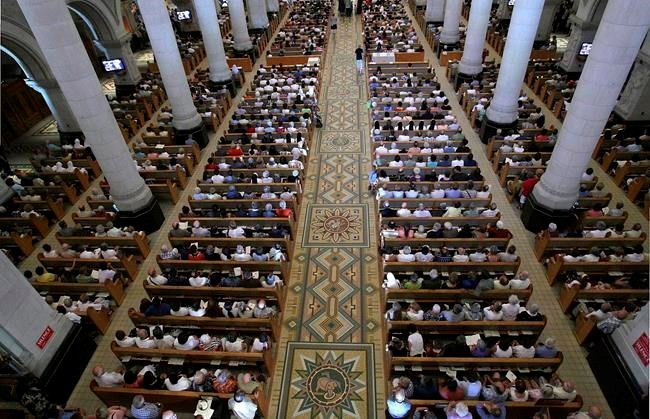MONTREAL ŌĆö The site of the first mass in Quebec during the Pope's weeklong visit to sa╣·╝╩┤½├Į to make amends with First Nations, M├®tis and Inuit communities is a renowned pilgrimage destination that merges Indigenous culture and Catholicism.
For more than 300 years, the Ste-Anne-de-Beaupr├® Basilica, about 30 kilometres northeast of Quebec City, has been visited by thousands of pilgrims, and St. Anne ŌĆö revered in Christianity as the grandmother of Jesus ŌĆö holds a unique place within some Indigenous cultures.┬Ā
ŌĆ£I think St. Anne has always been a part of the spiritual life of Indigenous Peoples ŌĆ” the Innu pray to her a lot,ŌĆØ Tania Courtois, an Innu health co-ordinator for the community of Ekuanitshit, on Quebec's Lower North Shore, said in a recent interview.┬Ā
Courtois will be among hundreds of people from her community, including several residential school survivors, to attend Pope FrancisŌĆÖs mass on Thursday.
The event comes amid tension between the Roman Catholic Church and Indigenous people who suffered years of abuse at residential schools across sa╣·╝╩┤½├Į. But Ghislain Picard, chief of the Assembly of First Nations Quebec-Labrador, says thereŌĆÖs no animosity or questioning of people's personal religious choices.┬Ā
ŌĆ£ThereŌĆÖs a re-appropriation of our own traditional values, which include spirituality, without really abandoning the Catholic religion in many cases,ŌĆØ Picard said in a recent interview. ŌĆ£IŌĆÖm not an expert, but there are many people who have probably learned to combine both.ŌĆØ┬Ā
Denis Gagnon, a professor of anthropology at Universit├® de Saint-Boniface in Winnipeg, studied the origins of Ste-Anne-de-Beaupr├® and the devotion to St. Anne, mother of the Virgin Mary, among the Innu of northeastern Quebec.
Toward the end of the 1990s, Gagnon met with several Indigenous communities of the region to observe rituals and practices. Gagnon said Indigenous people were drawn to St. Anne because of her healing powers and her status as a strong woman. He pointed out that grandmothers play a key role in many Indigenous cultures.
Missionaries made use of her story to convert Indigenous Peoples to Catholicism, he said. "Jesus didnŌĆÖt have a lot of meaning for them,ŌĆØ Gagnon said in a recent interview. "(St. Anne) is a character with whom one can intercede for favours: health, a good hunt, a large family."┬Ā
Louis Rousseau, a professor in the department of religion at the Universit├® du Qu├®bec ├Ā Montr├®al, echoed Gagnon's observations.┬Ā
"Her place as a grandmother allowed Indigenous people to understand her as a protector, because in their world vision, grandfathers and grandmothers, real or imaginary, held that function," Rousseau said in a recent interview.┬Ā
For Jeannette Vollant, an Innu woman in her 70s from the community of Uashat mak Mani-Utenam, it's love and respect toward her own people rather than religious devotion that will draw her to attend Thursday's mass.┬Ā
"I don't have anything against people that will continue to go to Ste-Anne-de-Beaupr├®, that have a passion for St. Anne," Vollant said in a recent interview. "It's every person's choice."
Jay Launi├©re-Mathias, a 28-year-old Innu and Anishinaabe from the community of Mashteuiatsh, said he respects those who find healing in Catholicism even if he feels distanced from religion.
"As a young Indigenous person, it's more what will follow after this that interests me," Launi├©re-Mathias said in a recent interview. "What will be the gestures of reparation? It's not because the Pope apologizes that people are healed."
This report by The Canadian Press was first published on July 23, 2022.
---
This story was produced with the financial assistance of the Meta and Canadian Press News Fellowship.
Fr├®d├®ric Lacroix-Couture, The Canadian Press



